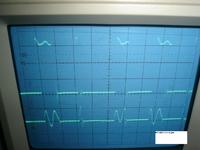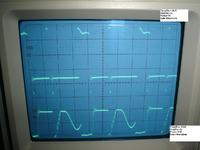Follow along with the video below to see how to install our site as a web app on your home screen.
Note: This feature may not be available in some browsers.

Is this also true for output volatge/load conditions that caused instable behaviour with feedback. It's possibly not easy to vary theI test 3842 in non-feedback state and pwm was constant

yes, output has instable behavior when we have sound.Is this also true for output volatge/load conditions that caused instable behaviour with feedback
With full load, the circuit is not operating in discontinuous mode. So slope compensation is needed for stable operation.



I guess that 620 rounds for secondary is high.I calculate that Ls=85mh but for considering dissipation I take it 100mh!!! is it false?The transformer windings ratio is unusually high for a flyback converter. Even at highest output voltage, the flyback voltage is still lower than the forward voltage

The "sine wave" following a rather short on-period is surely DCM, the other cycle looks rather like CCM. So I guess, it can be still a problem of basic current mode instability with missing slope compensation.can you guess from the picture that it work in DCM or CCM







is it core with the smaller cross section? I get the core cross from relations. I think it is not more effective. can you give me the way to get the better core with minimum losses ?A different transformer dimensioning can reduce the peak current for a specific transmitted power.





Generally, your measurements show, that the power and efficiency calculations are rather theoretical.



I didn't doubt about the emiprical measurements, but the output power and efficiency predicted from general designI measure parameters with volt meter and amp meter. can you describe it more?

Serious connection of multiple diodes is no problem in my opinion, it should work without additional resistors